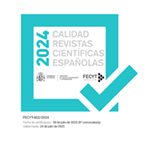Gender, power and communication: for a dialogue between the Political Economy of Communication and Culture and feminist theory
Abstract
Communication and Culture and feminist theory
Abstract. The Political Economy of Communication and Culture (PECC) and feminist critical theory have traditionally gone in parallel, with few attempts to strengthen the dialogue between both approaches. The existing attempts have focused on three lines of research: the analysis of the situation of women as workers in media companies; the critique of the commodification of the audience-women; and the denunciation of the representation of women, especially in advertising. In this work we point out the convenience of building a convergent agenda based on the potential of the PECC to frame research on women and communication from a historical and materialistic perspective. However, it is argued that it is necessary to renew and update the PECC with the contributions of the latest feminist theory in order to refine the analysis of the relationships between gender, power and communication, and incorporate the key issue of social reproduction and care work.
Downloads
Article download
License
In order to support the global exchange of knowledge, the journal Estudios sobre el Mensaje Periodístico is allowing unrestricted access to its content as from its publication in this electronic edition, and as such it is an open-access journal. The originals published in this journal are the property of the Complutense University of Madrid and any reproduction thereof in full or in part must cite the source. All content is distributed under a Creative Commons Attribution 4.0 use and distribution licence (CC BY 4.0). This circumstance must be expressly stated in these terms where necessary. You can view the summary and the complete legal text of the licence.










